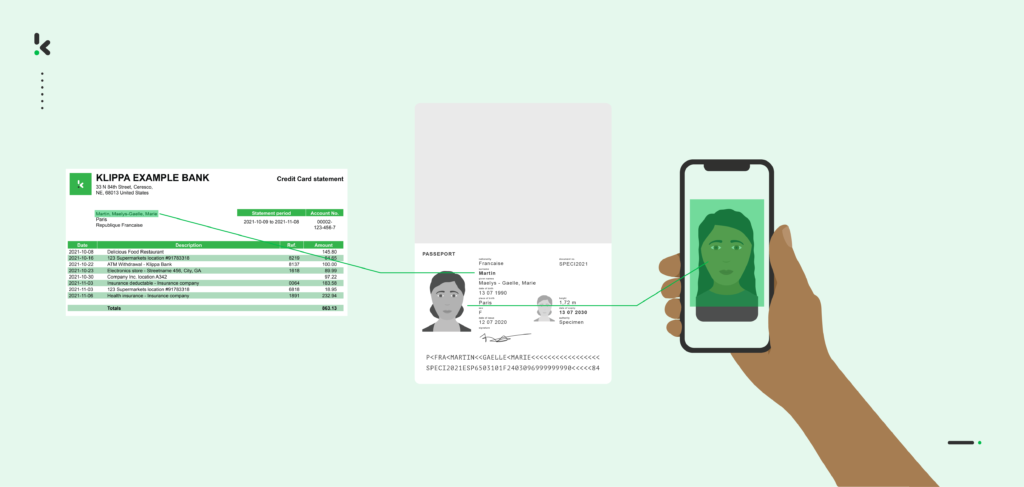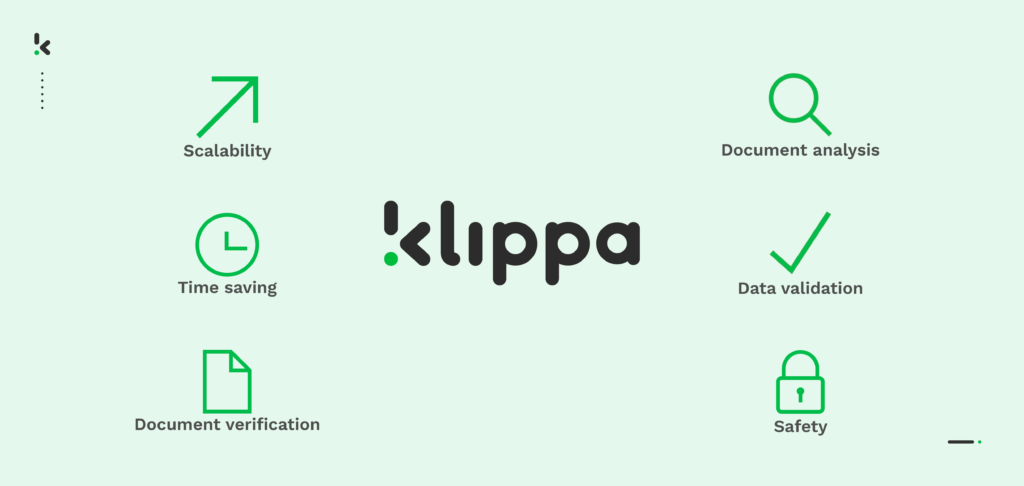

The real estate sector is one of the most important economic sectors. As a matter of fact, in 2021 it was valued at 3.7 trillion dollars worldwide. Such significant amounts of money attract fraudsters and other criminals, who are often involved in money laundering or terrorism financing.
In order to prevent money laundering through real estate and protect the industry, Know Your Customer (KYC) and Anti-Money Laundering (AML) controls are mandatory under AML regulations. They are created to ensure that money invested is traceable and not derived from criminal means.
To make your KYC & AML processes more secure and efficient, several Intelligent Document Processing (IDP) solutions have been developed. IDP solutions are able to conduct automated data extraction, document verification, fraud detection, and data masking, which help you to save time and money.
In this blog, we will clarify how money is laundered through real estate, discuss AML and KYC regulations per region, and explain how automated KYC software can protect your company from financial fraud.
How money is laundered through real estate
Money laundering is a big issue in the real estate sector. Given its criminal nature, money laundering is difficult to quantify, but the Financial Action Task Force (FATF) estimated that the amount of money laundered in real estate reached 1.6 trillion dollars in 2021.
Remember that in the same year, the real estate sector was worth 3.7 trillion dollars. So almost half of that total value came from money laundering!
There are several ways to launder money in real estate. The three most common ones are:
- Cash payments
- Property price manipulation
- Unclear ownership structure
Cash payments


It is important to ensure that not all cash payments are fraudulent. But keep in mind that cash payments are one of the most common ways to launder money because fraudsters can hide behind a legitimate way of paying. Also, with cash payments or deposits, it’s very difficult to track the origin of the money.
In practice, fraudsters make several deposits of small amounts of cash at several banks. The amount is usually small to avoid drawing attention to its origin. Once the money is in a legitimate bank account, it becomes part of the financial system, so the money is “clean” and laundered. Once in the financial system, the fraudster can use the money in all sorts of ways. For example, to buy a house, an apartment, or more broadly, by investing in real estate.
Property price manipulation
Property price manipulation is another way to launder money. This is typically done by artificially enhancing real estate value with renovations. This leads to an overestimation and overvaluation of the property to get a higher mortgage from a bank.
How does it work? A house buyer asks for a loan. In order to receive a bigger loan and launder money, they’ll increase the amount of money needed to renovate the house. To do so, they can either alter an existing invoice or work with fraudulent companies to create corrupted invoices.
By artificially increasing the value of a real estate property, fraudsters can receive a significant amount of money.
Let’s say someone buys a house costing €300,000 that requires €15,000 of renovation. Deliberately, they overestimate the cost of renovation and declare an amount of €50,000. Then, the bank grants a larger loan, and the difference between the loan and the actual price of the renovation is a fraud.
Unclear ownership structure
A company’s ownership structure states who owns the company, who its legal representatives are, and who can be held responsible for any criminal acts. It also states the identity of each individual having a financial interest in the company. This chart, part of the company registration, is mandatory and has to be as clear as possible.
A company’s ownership structure can be useful in any case of investigation or questioning about the company. It can be used to find out where money is coming from and if its origin is legal. To hide their ownership and divert attention from themselves, fraudsters often build an unclear, complex ownership structure.
This list of examples of money laundering is not exhaustive. There are many different ways in which fraudsters launder money. To prevent and detect these kinds of fraud, you can strengthen your KYC and AML controls. The following section introduces the different regulations in three different areas: Europe, the US, and the UK.
AML and KYC regulations in the real estate sector


To curb and control money laundering, the EU and individual countries have established regulations such as anti-money laundering and KYC regulations.
These regulations have a twofold purpose: to detect money laundering and prevent criminal activities from depriving funds of businesses. Next to that, fighting money laundering helps banks and other businesses to ensure the integrity and stability of their economic and financial system.
In the following section, we will highlight some of the most important KYC and AML regulations per region.
KYC regulations and practices per region
In the real estate sector, companies are required to comply with KYC regulations. They have to verify the identity of a client and register them based on authentic information and several ID documents or financial documents. This process is also mandatory in other sectors like banking and financial services.
Depending on the country, KYC regulations can differ. Let’s have a look at the differences between Europe, the US, and the UK.
Europe
In the European KYC regulations, an identity document containing a picture of the recipient is required. It is up to the country to decide which documents are considered ID documents and if an additional document is required. For most countries, it can be a passport, a national ID card, or a driving license. This is required to prove the identity of the individual.
A KYC authentication also requires Proof of Residence from the recipient. Many documents can be used as such. Examples are utility bills, rental agreements, bank statements, and payslips. In most cases, they must be less than three months old. All European regulations can be found in the Fifth Anti-Money Laundering Directive.
United States
In the US, the authority in place is the Financial Crimes Enforcement Network, also called FinCEN. They set out the rules and regulations for KYC checks.
Like in Europe, US recipients must prove their identity with an ID document containing a picture. The same list of documents goes here: passport, ID card, and driving license.
On top of that, one of the most important documents and sources of identification in the US is the Social Security Card. This document is also required among the KYC documents asked from the recipient.
There are three layers of KYC requirements in the US:
- Customer Identification Program (CIP): The CIP requires customers to provide four pieces of identifying information: full name, date of birth, address, and social security number. The CIP always applies, irrespective of the risk profile.
- Customer Due Diligence (CDD): CDD is a series of background checks and other screening on clients to verify a client’s identity and assess their risk profiles. By law, CDD is a required procedure for all financial institutions before onboarding new clients.
- Enhanced Due Diligence (EDD): EDD is only used for clients with a higher risk of infiltration, terrorist financing, or money laundering, and additional information gathering is often required.
United Kingdom
The KYC regulation in the UK is tighter than in most European countries or the US. Basically, it starts with the same obligations, such as knowing who the potential recipient is. The required documents are all regular government-issued ID documents.
It is more strict because the recipient has to prove the source of their funding and express their activities. This is done by providing salary slips, bank statements, and tax statements.
AML regulations
Anti-Money Laundering regulations aim to define the origin of the money invested. In real estate, because of the amount of money involved, AML regulations are to be taken seriously. Its controls take KYC processes to the next level. AML controls are back-end controls for identities and resources. European countries have decided on several rules.
In France for instance, banks have several obligations. Those obligations are linked to KYC regulations such as verifying the client’s identity. Banks can also request several additional documents. In particular, pay slips, tax statements, and bank statements.
Moreover, in 2015, the French Tax Office limited the maximum amount payable in cash to €3.000 to prevent large sums of money from being laundered.
In the UK, real estate agencies have the obligation to register with His Majesty’s Revenue and Customs (HMRC), a supervisory authority for AML. Then the Government Authority takes over and enforces the AML rules, such as maximum transaction amounts based on the potential acquirer’s income, or cash payment limitations.
AML and KYC regulations for real estate differ per country but share a common principle: verifying and validating the identity of the potential buyer. In order to do so, you need to check several documents per individual. For one potential buyer, you may have to process more than 5 different documents. If you have thousands of clients to onboard, this quickly builds up a huge workload.
In the next paragraph, discover how to overcome this challenge and comply efficiently with regulations.
Become compliant with KYC & AML


You can comply with KYC and AML regulations in two ways: either manually or automatically.
Processing documents manually is definitely not the most efficient way to go. By doing so, your verification process takes longer and is more sensitive to errors. Not to mention it can also present security breaches regarding sensitive documents being processed or stored incorrectly. Given the fact that each potential buyer has to submit a lot of documents, it also represents a significant amount of documents to manually check.
Nowadays, companies have developed effective and easy-to-use KYC software to comply with AML and KYC regulations. In the real estate sector, you don’t want to waste time on the administrative process of verifying ID documents, and having agents working on papers instead of viewing houses. You also want to be sure to deal with verified information and prevent fraudulent transactions.
That’s why it’s highly recommended to use KYC software to verify identities and automate certain KYC and AML processes. Automated KYC software streamlines your workflows. Documents are processed within seconds, which makes the whole process faster. It becomes easier to deal with large volumes of documents. This leads to the ability to process more documents faster and with higher accuracy.
Processing documents automatically is the way to go for your real estate agency. You don’t want to waste time or money processing hundreds of documents manually but you can do it faster and easier using an automated process.
Start your automated KYC/AML validation for your real estate business now
By automating your KYC/AML verification, you can verify all the documents needed according to local regulations. You can use KYC Software to automatically verify passports, ID cards, driving licenses, and even residence permits or social security cards.
On top of that, depending on the KYC software you decide to use, additional security layers can be added. For instance, biometric or selfie verification makes your ID verification even more accurate and secure.
Biometric verification is the act of using unique physical characteristics to identify an individual: such as fingerprints or facial characteristics. Selfie verification uses a picture of the individual and compares it to the picture on the ID document or previously stored selfie.


The main reasons for using such software are cost reduction, improved processing speed, and increased accuracy of identity verification. And, of course, being GDPR compliant with the ability to mask sensitive information or only process the required information.
In order to comply with KYC and AML regulations, real estate companies need efficient KYC automation software. In the next section, get introduced to Klippa’s KYC software and see how exactly it can streamline and secure your verification process.
What can you expect from Klippa’s KYC Software?
Klippa’s KYC software focuses on identity verification and can help you speed up your customer onboarding process while enhancing regulatory compliance. Our KYC software offers several security features, such as biometric verification, liveness checks, and selfie verification for added security.
Liveness checks are an even safer way to verify a user’s identity than selfie verification. With liveness checks, users are asked to perform a series of movements while using their camera. In this way, the software can determine whether the source is a real person or an imitation, therefore being a very secure method against spoof attempts.
Klippa’s KYC Software can process ID documents from over 200 countries. So even if your clients or investors are based in many different countries, we’re always able to verify their identity. We are GDPR compliant and don’t store any processed data. Data is only extracted and sent directly to you for further processing. Our KYC software uses Optical Character Recognition to automatically read document data with an accuracy rate of up to 95%.
Klippa’s KYC software is also implementable into your current software and can also be connected to external data sources such as databases for background checks, PEP screenings, and more
Do you want to automate your KYC or AML process for your real estate business? Book a demo with one of our product experts via the form below, or contact us directly.